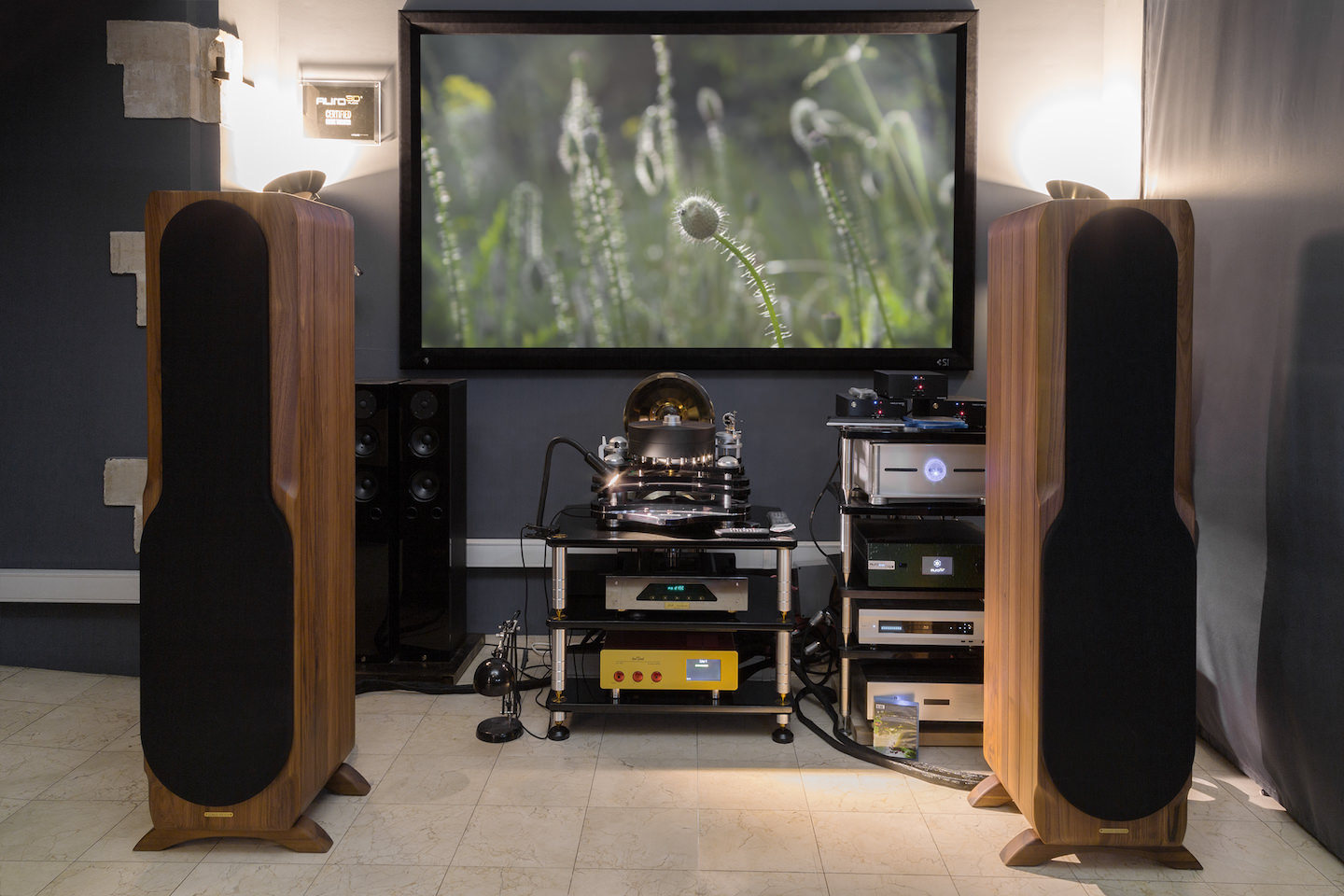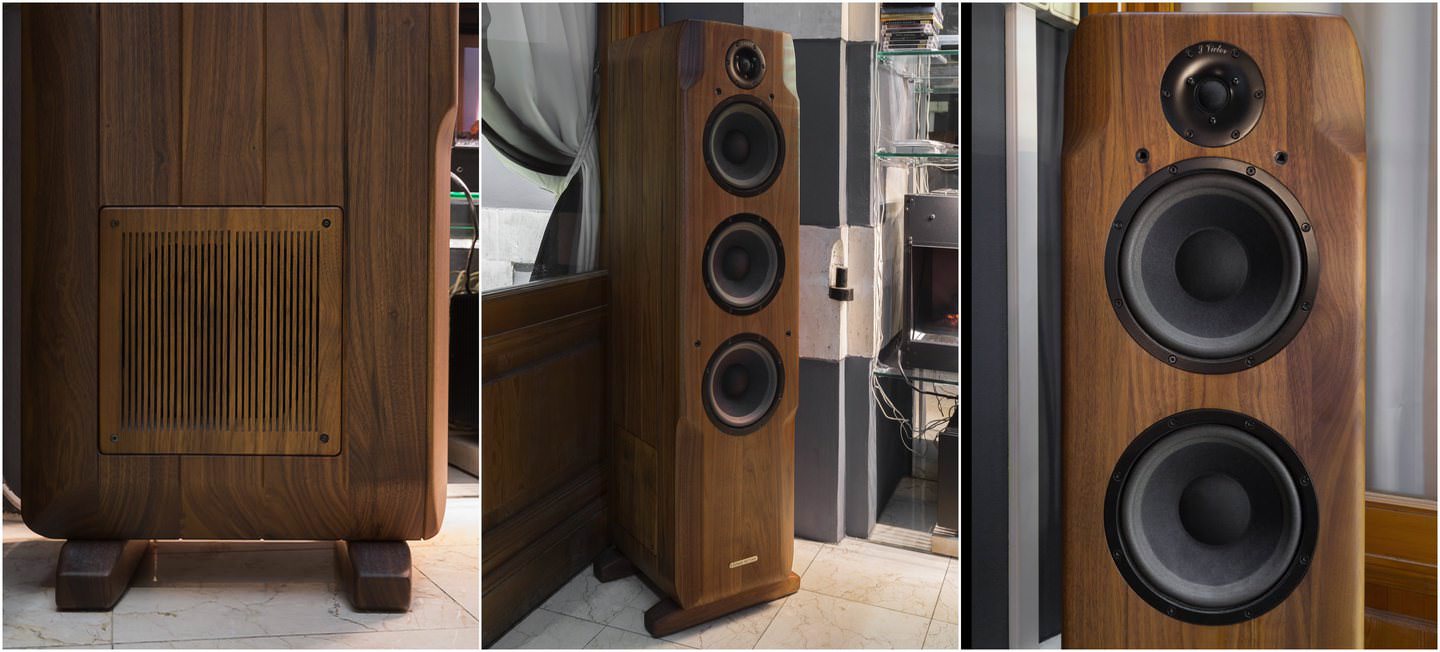
Author: Max Naumov
Imagine exploring High End sound saloons in search of truly Italian equipment and then finding that it has actually been developed and assembled by a former Russian. However, the “Made in Italy” label alongside the Sonus Victor logo has no contradiction with reality whatsoever.
The founder of the Sonus Victor company, the main ideologist, engineer, constructor and manufacturer of most of the components Victor Porkalov is living and working in Italy for over 25 years by now. In 2011 Victor has decided to transfer his passion for quality sound into the professional field and has opened a small production facility in Verona. Everything went in a very Italian way: a personal approach, exclusive materials, handmade production of single pieces. Obviously we’re not talking about budget models when working in such a format. Any range of Sonus Victor speaker systems, starting from the bookshelf three-line SV200 and up to the massive four-line floor speakers SV400 purely belong to the High End class. And this is very Italian as well.
The secret crossover
By a fortunate coincidence the testing took place in the finder’s presence so we were rid of a need to search the web for advanced technical details. The answers to questions about the importance of one or another component were quite plain – the most important part of acoustics is the crossover. It is the crossover that provides for the required sound character. The circuit is the know-how and author’s main secret; therefore, we were unable to get any details on it. We only know that it’s quite complicated and along with self-made components the board contains Mundorf capacitors of the highest grade. The capacitors and other components of the crossover are carefully selected by pairs to ensure maximum sound identity between a ready set of a pair of speakers.
During the tuning process of every new model a considerable time is spend on fine calibrating the crossover by ear. Equipment means are of course used as well but actually countless listening is the main instrument of control. Having managed to familiarize with several Sonus Victor speaker systems at a time I can confirm that the developer’s hearing definitely does not let him down. Different Sonus Victor speaker systems by design have the same sounding style.

Adjusted by the enclosure
The enclosure and the stands are made from solid Italian walnut. This wood was selected by Victor based on technical and esthetic qualities. According to him there’s no alternative to this material at present. A ready enclosure is polished and lacquered with a protective layer that does not change color, surface texture or even the touch feeling of the wood’s surface. Besides the thick panels that provide for acoustic passivity, the cabinet is split inside into independent acoustic chambers by sound-blind separators – separate cameras for speakers or a line. Sealed enclosures for all sound sources. A phase invertor or other options of a semi-opened construction do not cohere with the author’s concept as not providing for a clear and precisely controlled sound.
Therefore dividing the enclosure into chambers works for the gain frequency characteristic and simultaneously is a way to manage the dynamic characteristics of the speakers. Furthermore, such a construction drops off distortions. The sound emitters do not interfere with each other through the enclosure’s inner space that tends to be a serious drawback of single-hull enclosures.
(…)

Speakers from the manufacturer
The system I have tested represented a 4.0 home theatre set and was bundled with top and lower class speaker systems. It was hard not to notice that the speakers are very similar to each other. The tweeters look absolutely identical. They all have a soft fabric dome. The mid and low range speakers consist of cone domes of dense impregnated paper on foamed synthetic suspension. Most valuable about the speakers is their absolute uniqueness. They do not have any prototypes nor analogues on the market of readymade products. All the speakers are hand-made. High tech parts such as diffusors, suspension, baskets with magnets the company buys or orders production according to their propriety specifications on specialized production facilities and the sound coils and magnet lines are made by Victor himself.
Besides the differences in size the SV250 and SV400 models vary by sets of loudspeakers. As such the SV400 has four lines with the mid-range speakers working in pairs and the tweeters working separately voicing high and ultra-high range frequencies. The SV250 is a three-line system with a single mid-range loudspeaker and three bass drivers. The mid-range speaker is positioned right below the tweeter with two bass speakers underneath it and with another “lost” bass speaker on the side. It’s made unnoticeable by the wooden grill with thin vertical grooves. I would say that it looks a bit like ventilation railing. A riskier choice than a traditional fabric grill but esthetically this is definitely a good option.
Listening system
I felt listening to something soulful immediately, something warm and relaxing, therefore firstly I have put on some light acoustic jazz and still acoustic and as unobtrusive blues and some chamber classics. The system has passed this test successfully and its sound was a pleasant surprise: the sound sources could be perfectly localized by hearing, the stage has formed realistically and in adequate proportions. John Lee Hooker was sitting somewhere in the back of the room and the venue reflections from his guitar gave a clear perspective of the studio size where the recording took place.
Classical music has opened in full width and depth of a concert hall without any limitations and it was quite difficult to cohere with the visible room limits where the acoustics were actually disposed. All in all, the first conclusion was that the sound is not tied to the acoustics in principle and they can even lend some naturalness and realism. Listening to more complicated content gave further evaluation of the quality class and level of versatility of the Sonus Victor SV400 acoustics – practically any music sounds worthy from them. Mainly due to the high resolution and also the mids that reflect any music truly and without embellishment. Without adding any extras, the acoustics reveal their own advantages. Most interesting is listening to classical music, good old hard rock, fine vocal records of different genre from Sinatra and Celentano to Netrebko and Nina Hagen. Even electronic music sounded fantastically. I must note that audiophiles’ recordings sound very diverting with their deliberately high detail and a lot of “air”. The matter of the amount of high frequencies is resolved with Sonus Victor “mechanically” by choosing the correct listening position and sitting height. The acoustics have a wide dispersion of high frequencies in the horizontal direction but a different dispersion vertically, quite narrow. Therefore, if the listener allocates his head on the axis of tweeter beaming he will hear somewhat different high frequencies by character then if he would deflect from it. For example, while sitting on a low couch I noticed the highs went slightly damped, soft. But when I stood up the sound became stridently bright with a transparent edge. But in both cases the high frequencies were extremely qualitative and detailed.
The bass from SV400 is very deep, but by being tuned flat and controlled by the amplifier with extreme accuracy, in the beginning it may seem that there is something lacking in the low range. A similar effect usually occurs when listening to studio equipment that many blame for having a too dry sound. The reason is in being accustomed to loose bass that is typical for the majority of acoustic systems. Any questions in regards of the bass were rejected upon switching to home theater listening mode. When it came to explosions, roaring and other low range effects the power, depth preciseness and clearness of the bass did not raise any complaints. Despite the absence of a subwoofer within the system the viewers may suppose that there are two. In cinema mode the perfectly calibrated mids have as well shown all their advantages providing with dialogue clearness and an extremely realistic transfer of any sound effects. The rear pair of SV250’s that joined the play ideally match the SV400 in tonality. Together they form an absolutely seamless sound picture. The system may sound even more spectacular when extended with a central channel what will happen in the very proximate future.
Denial and proof of stereotypes
In my personal ratings Sonus Victor holds a special place, not just as acoustics that are within the list of must listen to, but as well as a model that simultaneously confirms and denies various established notions.
For example, ideal bass control and lively natural sounding is easy to explain by employment of a sealed enclosure configuration with properly selected inner space volumes and using natural materials for sound emitting on all speakers. Though the resilient suspension used for the mid and low range speakers combined with complicated crossovers usually limit the dynamic range. Such acoustics tend to be not delivering enough detail on low sound volumes. But Sonus Victor brakes this rule as you don’t need to turn up the volume knob and the powerful dynamic passages will sound without noticeable limitations on any levels.
The only stereotype that the Sonus Victor acoustics could not brake is the balance between quality and cost. Really impressive and interesting acoustics remain in an impressive size and price tag. Probably we cannot escape from the laws of physics and business.
We can only listen to the music and enjoy.
Technical specifications:
- Sonus Victor SV400/ SV250
- Frequency range: 20-30000 Hz/ 28-30000 Hz
- Configuration: 4 channel/ 3 channel
- High fr: 2x25 mm, fabric dome/ 1x25 mm, fabric dome
- Middle fr: 2x200 mm, impregnated paper/ x200 mm, impregnated paper
- Low fr: 2x300 mm, impregnated paper/ 3x200 mm, impregnated paper
- Acoustic mounting: sealed enclosure (separated chambers)/ sealed enclosure (separated chambers)
- Sensitivity: 92 dB/ 91 dB
- Impedance: 4-6 ohms/ 6-8 ohms
- Nominal power: 50-400 Watt/ 20-200 Watt
- Dimentions: 1550x380x470 mm/ 1220x320x420 mm
- Weight: 80 kg/ 49 kg





